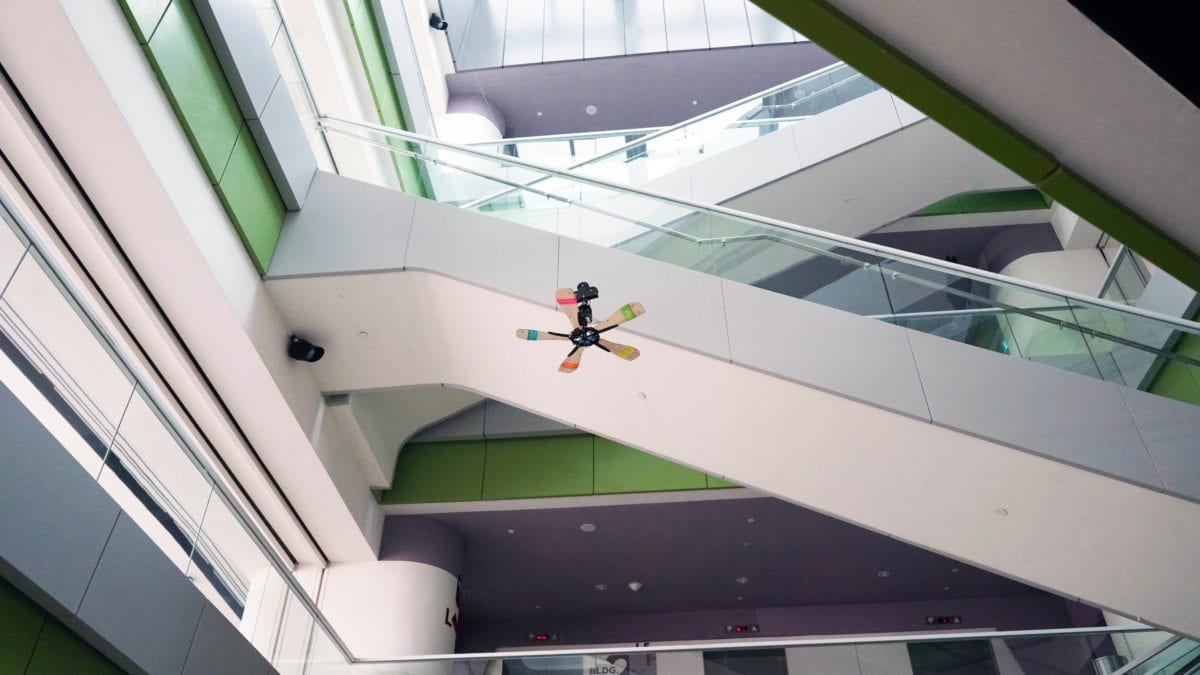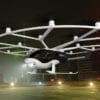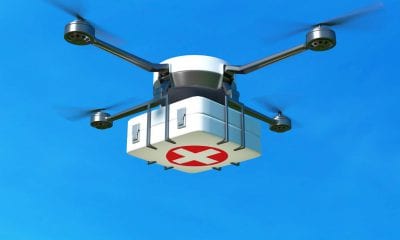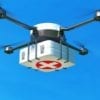Bio-Inspired Drone Splits into Five Mini-Drones Mid-Air
Roboticists at the Singapore University of Technology and Design (SUTD) have been experimenting with drones that mimic samara seeds in nature and in a new paper in IEEE Robotics and Automation Letters they explore what happens when five of the drones are attached together and then separate in mid air. The device, inspired by maple seeds, is designed to free-fall from an aircraft or drone and steer itself towards a target destination, while carrying a small payload. It is ideal for surveillance missions and data collection operations. In disasters like oil spills and forest fires, it can be deployed to monitor the situation or deliver emergency medical supplies.
A samara is a type of dry fruit where one seed is surrounded by papery tissue that helps carry the seed away from the tree as the wind blows. Samaras have a wing-like shape on one side that causes them to spin as they float to the ground from the branches of tree. As kids you might have tossed them into the air yourself, watching as the “whirlybirds” spun out in different directions.

In a this paper published in the journal IEEE Robotics and Automation Letters, researchers from the Singapore University of Technology and Design describe how they created a drone comprising five samara-like mini-drones — giving each an actuated flap for a bit of extra navigational control. They then pulled a Voltron, combining five of the mini-drones into one bigger, ceiling fan-shaped drone that’s even easier to control.
Researchers believe the samara auto rotating wing drones themselves could one day conceivably carry small payloads like sensors or emergency medical supplies, with these small-scale versions in the video able to handle an extra 30 grams of payload. They could be used to disperse sensors or emergency medical supplies the same way samaras scatter maple seeds. While they might not have as much capacity as a traditional fixed-wing glider, they have the advantage of being able to descent vertically, and can perform better than a parachute due to their ability to steer. 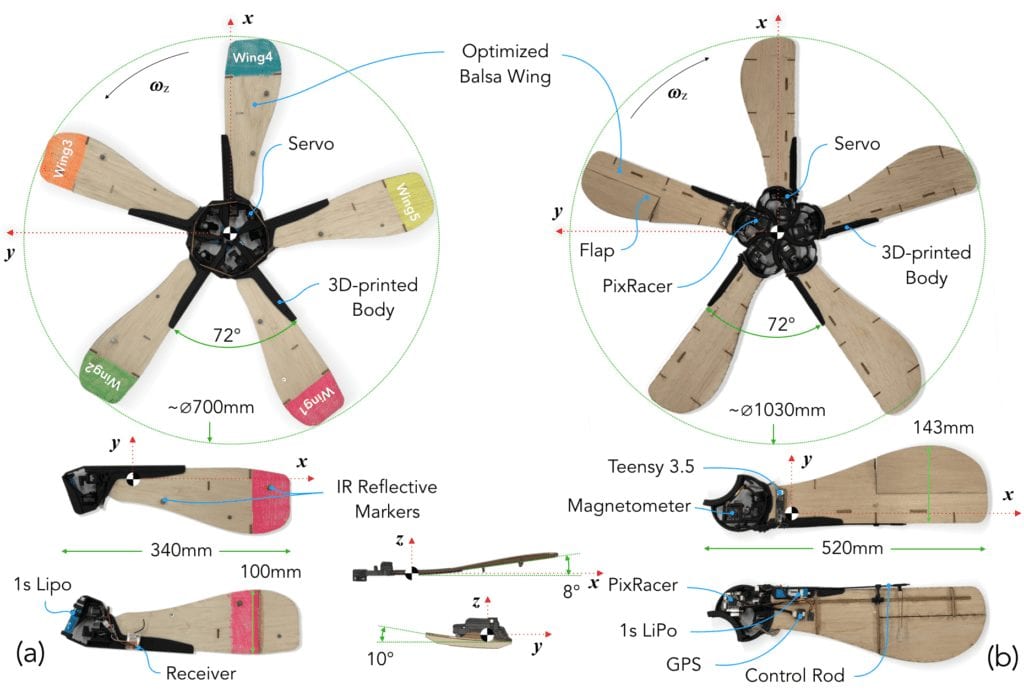
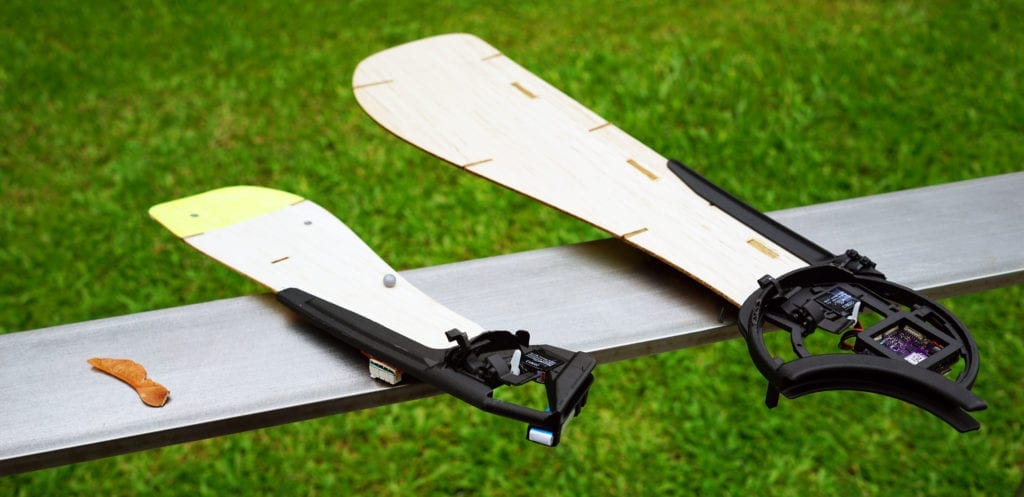
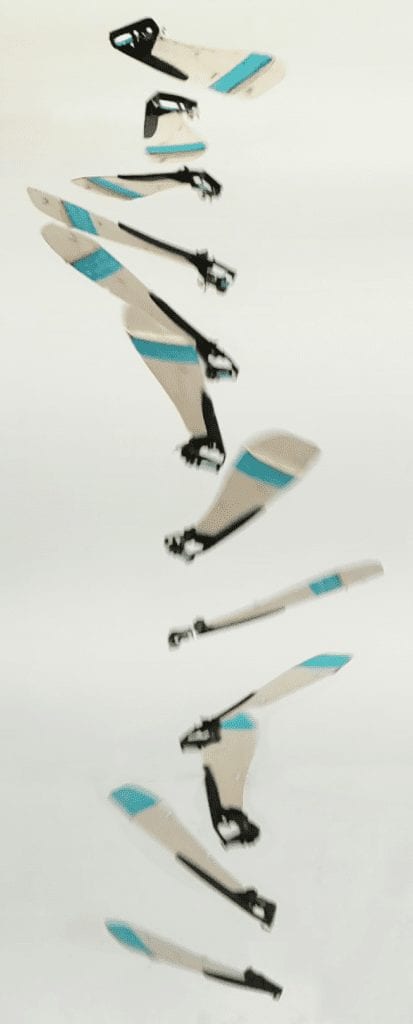
In a video, the team demonstrates how it could drop one of these bigger drones from above, guiding its descent until it gets closer to the ground:
The concept features a collaborative autorotation in the initial stage of drop whereby several wings are attached to each other to form a rotor hub. The combined form achieves higher rotational energy and a collaborative control strategy is possible. Once closer to the ground, at that point, the researchers could trigger the drone to break into its five mini-drones, with each heading off in its own direction. The mini-drones can exit the collaborative form and continue to descend to unique destinations. A section of each wing forms a flap and a small actuator changes its pitch cyclically. Since all wing-flaps can actuate simultaneously in collaborative mode, better manoeuvrability is possible, hence higher resistance against environmental conditions. The vertical and horizontal speeds can be controlled to a certain extent, allowing it to navigate towards a target location and land softly.
The researchers plan on improving the design of their little drones, with the goal of increasing the rotation speed and improving the control performance of both the individual drones and the multi-wing collaborative version. In their paper, the team suggests these samara-inspired devices could one day accurately deliver payloads for military, research, or humanitarian missions from high above their destinations.
The research paper titled, ‘Dynamics and Control of a Collaborative and Separating Descent of Samara Auto rotating Wings,’ appears in the current issue of IEEE Robotics and Automation Letters.
Citation: S. K. H. Win, L. S. T. Win, D. Sufiyan, G. S. Soh and S. Foong, “Dynamics and Control of a Collaborative and Separating Descent of Samara Autorotating Wings,” in IEEE Robotics and Automation Letters, vol. 4, no. 3, pp. 3067-3074, July 2019. doi: 10.1109/LRA.2019.2924837, URL: http://ieeexplore.ieee.org/stamp/stamp.jsp?tp=&arnumber=8744585&isnumber=8668830
How useful was this post?
Click on a star to rate it!
Average rating 5 / 5. Vote count: 2
No votes so far! Be the first to rate this post.
We are sorry that this post was not useful for you!
Let us improve this post!
Tell us how we can improve this post?

